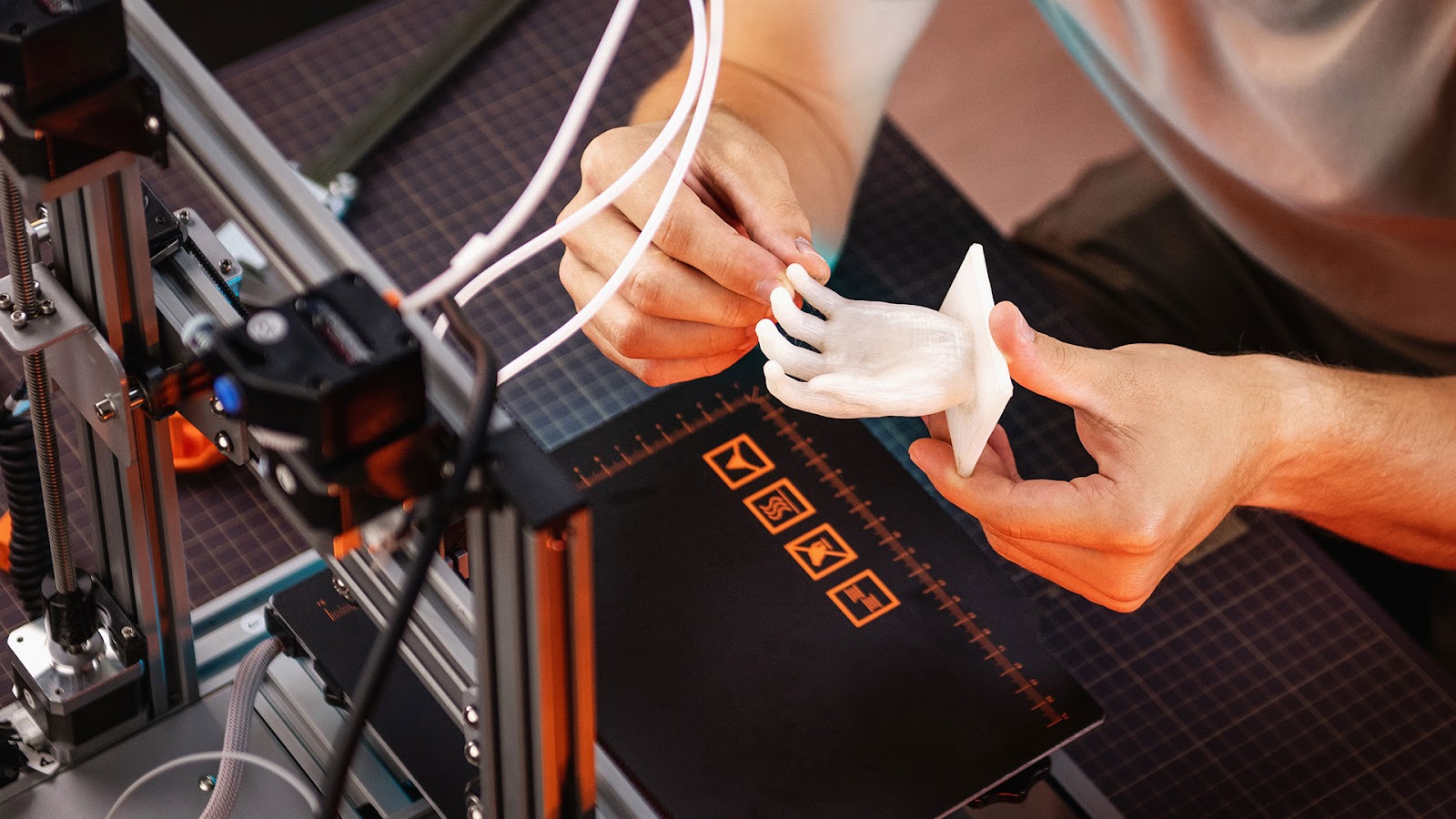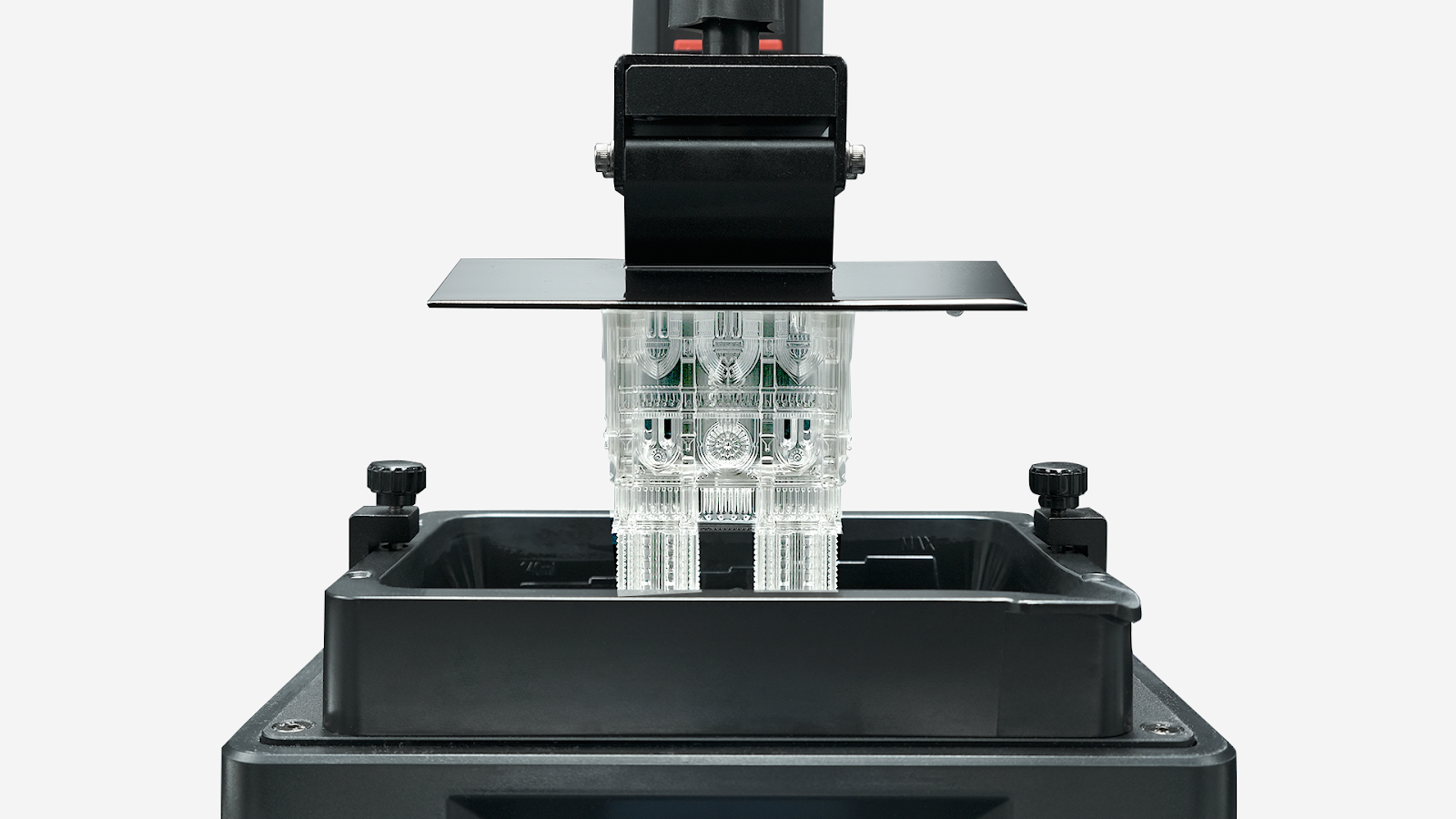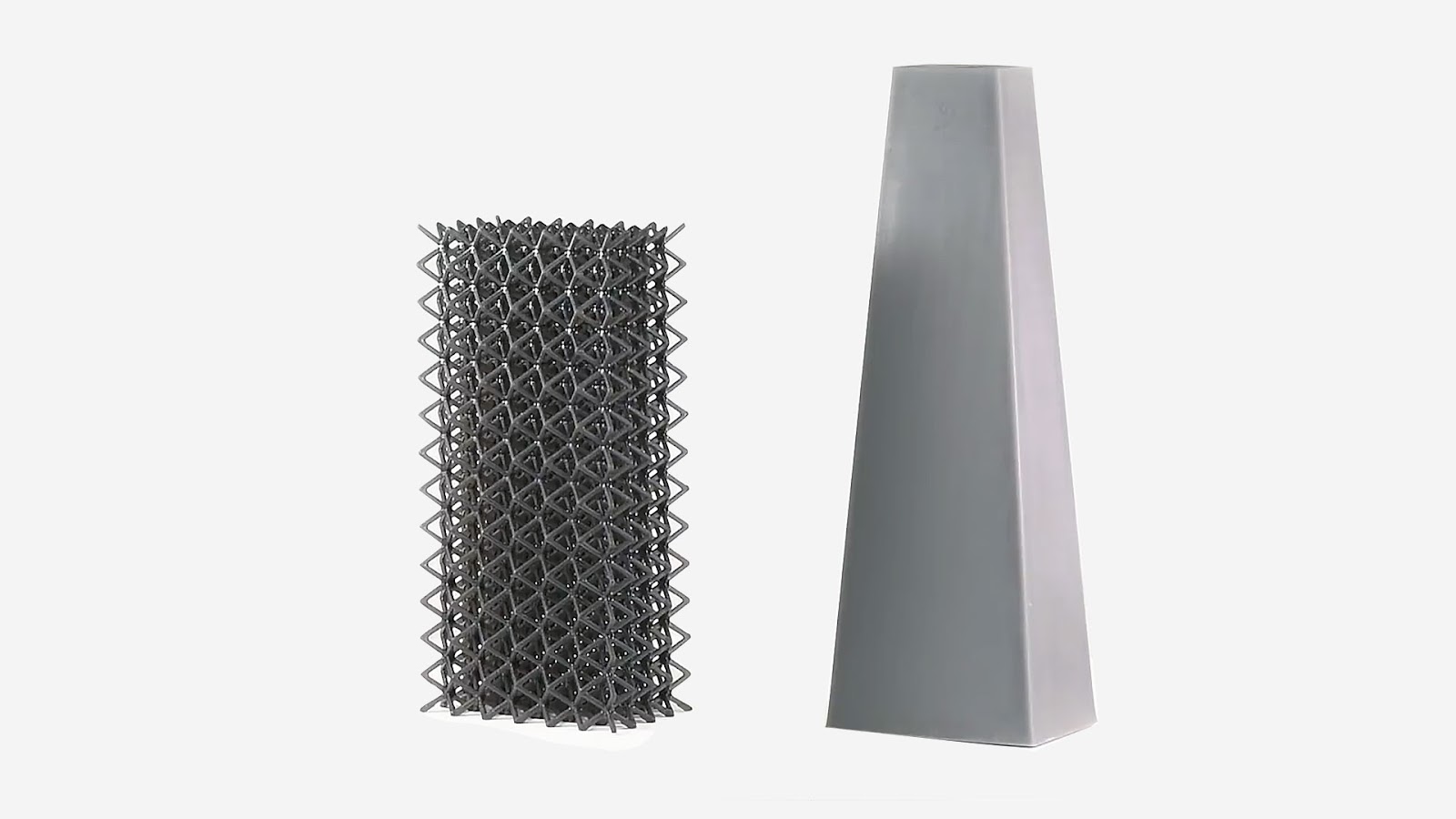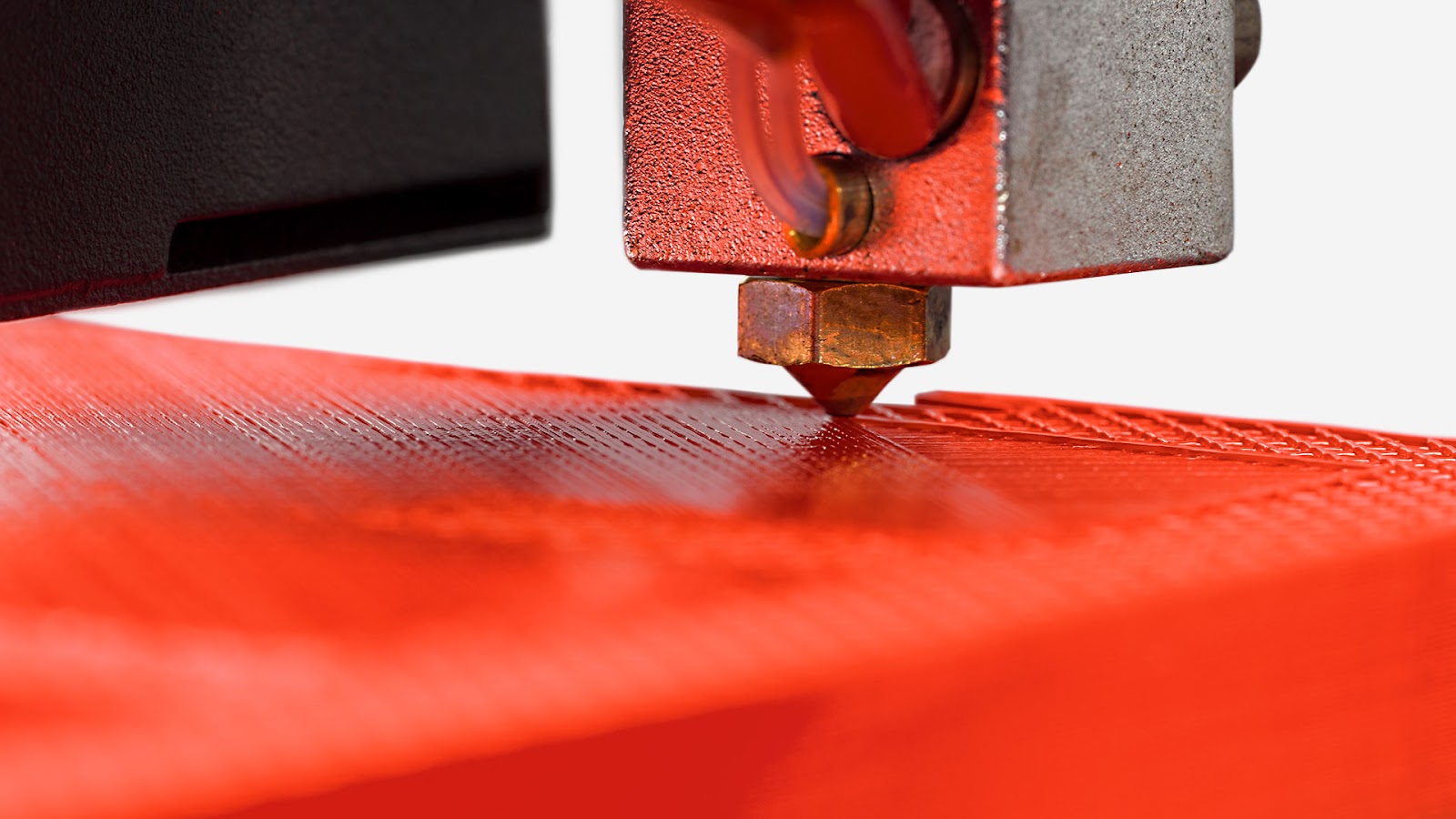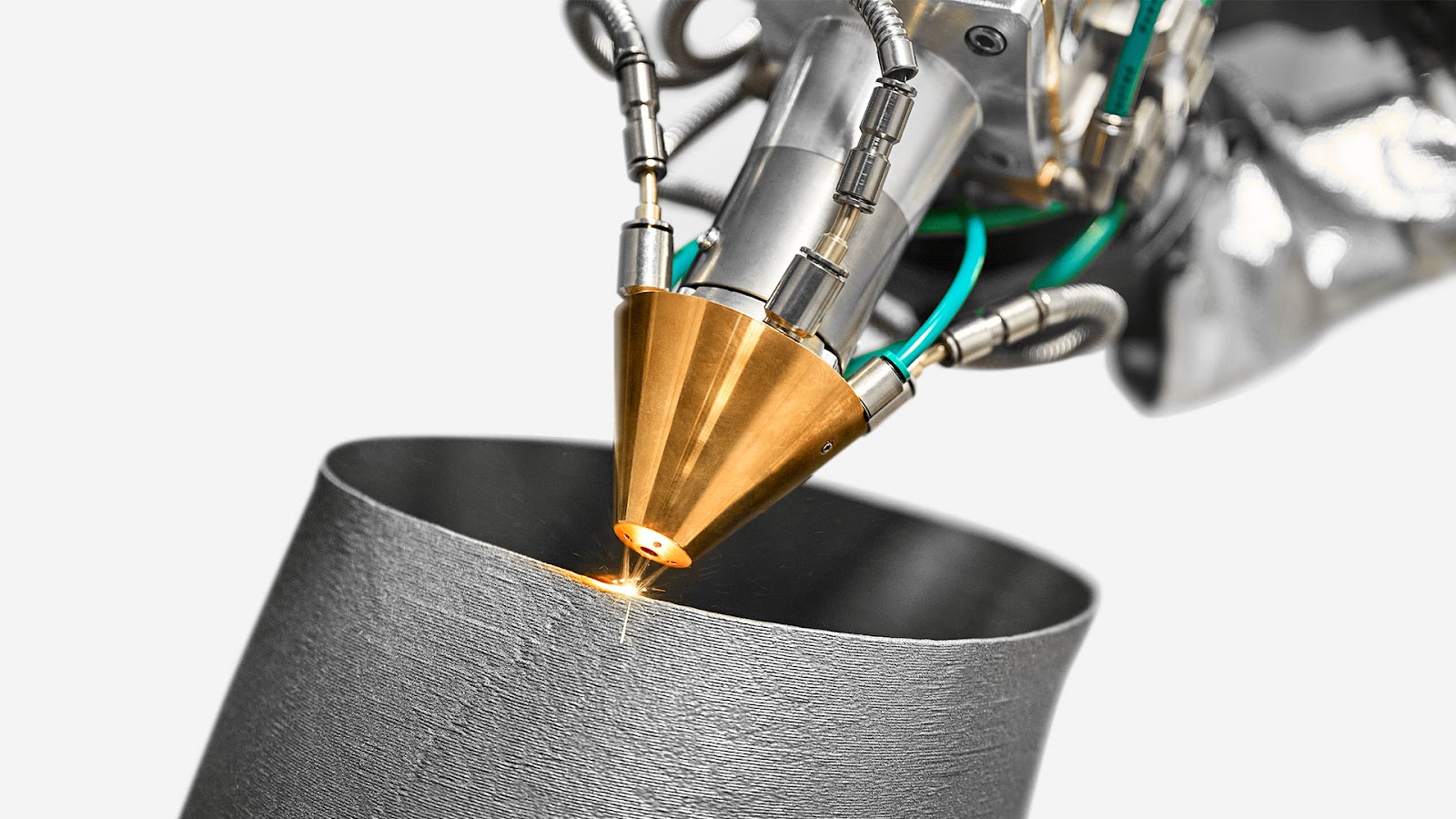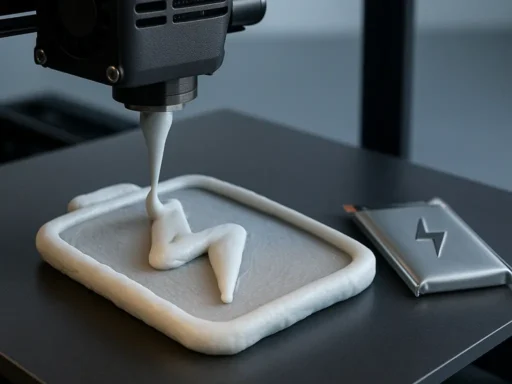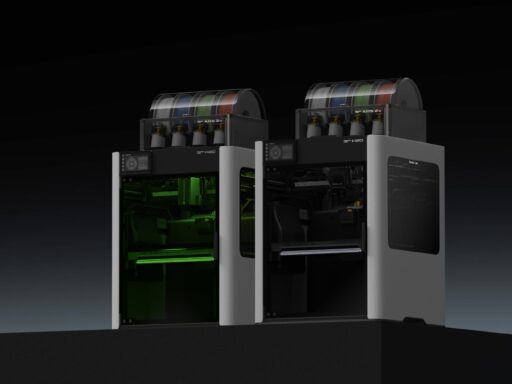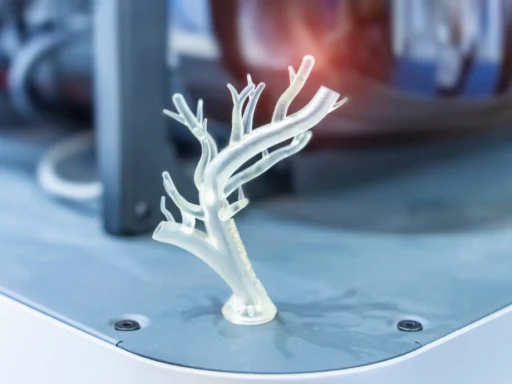What are the types of 3D printers, what can they do, and how on Earth can you navigate the sea of abbreviations defining all the different kinds? If at least one of these questions has ever occurred to you, make yourself a cup of coffee and get comfy – we’ll tell you everything.
All of the 3D printing acronyms may seem pretty far-reaching and vast, but in fact they stand for a number of key technologies that all fall under the same 3D printing umbrella. These technologies are the processes we use to categorize 3D printers existing today. This article is our effort to examine a total of seven major 3D printing methods established in ISO/ASTM 52900 standard.
Let’s start with a list of the seven most recognizable variations of the 3D printing process, and technology types falling under each category:
- Vat Photopolymerization
– SLA
– DLP
– CLIP - Material Jetting
- Binder Jetting
- Material Extrusion
– FDM - Powder Bed Fusion
– SLS
– DMLS / SLM
– MJF
– EBM - Sheet Lamination
- Directed Energy Deposition
Easy, right? Don’t worry if not – let’s dive into the details.
Vat Polymerization
Also known as resin 3D printing, Vat polymerization is one technology entailing a group of 3D printing processes that use a light source to selectively harden photopolymer resin. What happens is a liquid polymer is placed in a vat, and then light hits its particular spot or area to cure the material until it hardens. This is done layer by layer: as soon as one layer solidifies, the build platform of the printer moves to build the next one. Vat Photopolymerization in a way is a family of 3D printing technologies based on Stereolithography (SLA), with its members being Digital Light Processing (DLP), and Continuous Liquid Interface Production (CLIP). The principal difference between all these types of 3D printing is the light source – depending on how it is used to cure the resin, many brands in the industry came up with and patented a diverse range of Vat polymerization versions.
- SLA is a dinosaur of the tech world, older than the actual internet: the first ever 3D printing technology goes back to Chuck Hull’s invention in 1986, and it has arguably remained the most well-known 3D printing technology up till today. In an SLA printer, laser beams move across a vat with polymer, selectively curing the resin through the bottom of the vat. As one layer hardens, it moves up to make space for the next liquid layer to get solidified.
SLA 3D Printer lifting 3d printing replica of a gothic cathedral using clear uv resin. Image source: shutterstock
- DLP is yet another modification of the historical 3D printing technology, but with its own
unique features. Instead of a laser beam, DLP uses a digital light projector to flash the image of the layer and cure the points of the layer all at once. The digital light projector is actually a screen, so a quick fun fact: while the image of every layer is made of pixels, a 3D layer is made of tiny cubes called voxels. - CLIP is a 3D printing method that came from EiPi Systems and was then developed as a proprietary technology by Carbon 3D. Again, CLIP is all about solidifying a liquid photopolymer in a vat, from which a smooth-sided solid 3D object will appear, layer by layer. This time, though, the ultraviolet light goes through a transparent part of the pool. The main difference between this and the other types of printing is that this process is continuous.
DLP technology utilizes a digital micromirror device chip, which is also used in some commercial movie projectors. Image source: Youtube – https://youtu.be/97ARLiTHjX0?t=596
Material Jetting
Lots and lots of tiny resin droplets are sprinkled on a build plate and cured with UV light, layer upon layer, until the object is built up. Material jetting is a newer 3D printing technology, which is sometimes compared to the usual 2D inkjet printing: to be exposed to light, the polymer is deposited in the form of mini-droplets from separate print heads, which allows to combine materials and create objects in different colors. In simple words, with an M-Jet 3D printer, you can store each material in an individual print head, and jet its particles separately.
Binder Jetting
The key to this 3D printing process is a liquid bonding agent. It is selectively put on a layer of powder, which could be made of metal, ceramic, sand, or composite grains. Binder Jetting slides a print head over the powder, dropping a binding agent to glue – without any heat! – the powder granules together. In a way, this process is a combo of material jetting and powder bed fusion. One great perk of this 3D printing technology is a great resolution you can achieve: the binding droplets are as tiny as 80 microns in diameter, and when one thin layer is ready, the powder bed goes a tiny bit down, allowing the precise spots of the next layer to be covered with a binder. This is done over and over again, until the part is complete. Another advantage is you can collect and use the remaining powder!
Material Extrusion
The name of this 3D printing process speaks for itself: to make a solid object, you squeeze out thermoplastic material through a heated nozzle. The filament typically melts when going through the printer extruder, which follows a specific, software-defined path and puts the material onto a heated build platform. Once the material is deposited, it cools down and hardens, and the layer is ready for the next one to go on top of it. The Material Extrusion method has a reputation for being quite a straightforward process, yet offering the most diverse range of materials to work with, from plastics and metals to biogels.
Fused Deposition Modeling
FDM (Fused Deposition Modeling) is the name given to a wide-spread material extrusion technology, originally known as Fused Filament Fabrication (FFF). Commercialized by Stratasys in the 90s, FDM, however, became the common heritage of the 3D printing enthusiasts across the globe as soon as the patent expired. The cheapest technology on the market, funnily enough, served as the springboard for the multi-billion dollar industry. Nevertheless, FDM is still something accessible to many, from 3D geeks to teachers to industrial professionals: all you need is a 3D model to be transformed into instructions for your FDM 3D printer to follow. Thus, these come in a wide variety: from simple devices to intricate machines. The technology driving the process is the same for printers of any complexity: the filament is fed onto a build platform through a heated printer nozzle following a certain pattern. The heated material melts and becomes adhesive, which makes it possible for every next layer to stick together and form a solid object.
FDM 3D printer close-up during printing. Image source: shutterstock
Powder Bed Fusion
Powder bed fusion 3D printers use a thermal energy source to selectively fuse plastic, metal, or ceramic powder particles. Here are some variations of PBF to explore.
- SLS stands for Selective Laser Sintering, which involves heating a polymer powder, depositing it onto a platform, and selectively sintering it with a CO2 laser beam. The laser scans the surface of the powder and hardens the cross-section all at once, then the build platform moves one layer down. The printer’s blade recoats the platform with a new layer of powder, the cross section gets scanned again, adding another solidified layer. At the end of the process, the object typically gets all cleaned and brushed. SLS 3D printers vary in size, power, and number of lasers they have, and most commonly use nylon as a printing material.
- DMLS (Direct Metal Laser Sintering) and SLM (Selective Laser Melting) printers have the same working principle: they, respectively, heat up and melt metal powders to form solid parts. While DMLS printers heat and sinter various alloys, SLM machines melt aluminum, steel, or cobalt chrome powders.
Mechanical detail in the 3D making, using metal powder. Image source: shutterstock
- MJF, or multi-jet fusion 3D printers work with the layers while those are still molten: that is, instead of adding a new layer on top of a solid one, they jet a new portion of an agent to fuse it into a previous layer by heating. MJF printers tend to create smoother parts, since at the final stages the powder bed is taken to a processing station, where integrated vacuum removes the loose powder.
- EBM 3D printing technology makes use of electrons to fuse metal powder granules. The main difference between SLS and EBM 3D printers is that the latter use an electron beam instead of a laser beam as energy source to fuse metals. This method works best with zirconium or titanium (or other conductive materials).
Sheet Lamination
The most surprising category of all 3D printing technologies, sheet lamination, is technically stacking thin sheets of material (which could be adhesive-coated paper, metal, or plastic laminates) on top of each other and then laminating them to create a certain shape by cutting, whether with a laser, or mechanically. The machines for the method give you a freedom to experiment, although there are two significant drawbacks to this technology: a lot of waste and a higher cost, compared to other types of 3D printing devices.
Direct Energy Deposition
DED 3D printers are massive professional devices that work with metals to repair or replace large parts. It is a diverse and complex technology widely used in industrial applications, and it falls into numerous sub-categories – those mostly depend on the energy sources and materials used. Some common types of this method you may have heard of are Direct Metal Deposition (DMD), Laser Engineered Net Shaping (LENS), Laser Deposition Welding (LDW), Electron Beam Additive Manufacturing (EBAM), and 3D laser cladding. What happens in a DED process is, metals are deposited in any way but extrusion, and fused simultaneously by one of the various types of energy: high temperatures, laser or electronic beams, supersonic speed, and more. DED 3D printing is often the first step before CNC machining.
Conclusion
This guide is something that will obviously be evolving with the 3D printing industry, and this is only a basic categorization of the seven most common 3D printing technologies. In a world where virtually anything, from jewelry to industrial parts to food, can be 3D printed, it’s good to be aware of major technologies behind the amazing machines that do it.
So we hope this has been a good start to bring you up to speed, and help you navigate the rapidly developing 3D printing market!
